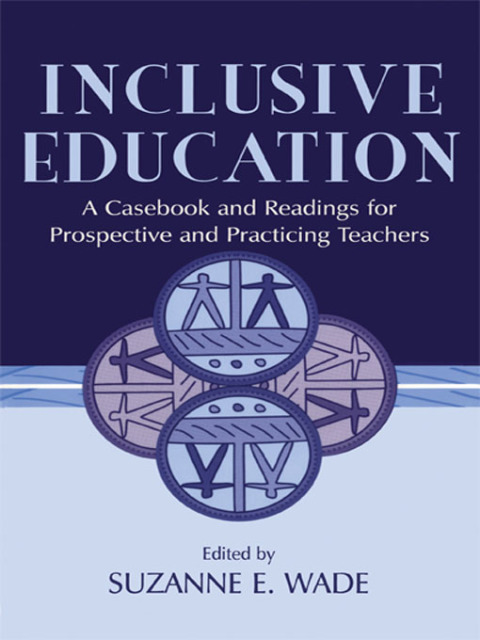Description
Efnisyfirlit
- Cover Page
- Half Title page
- Title Page
- Copyright Page
- Contents
- Foreword
- Preface
- List of Contributors
- Readings
- Creating Inclusive Classrooms: An Overview
- A Brief History of Special Education
- Inclusive Education
- Curricular and Instructional Approaches that Facilitate Inclusion
- Cooperative Group and Project Learning as Inclusion Strategies
- Elements of Successful Cooperative Learning
- Scaffolded Strategy Instruction in the Context of Meaningful Learning Activities
- Some Cautions
- Alternative Assessment
- Performance-Based Assessment
- Collaborative Teamwork
- Conclusion
- References
- Weaving Lessons: Strategies for Teaching Mathematics and Science in Inclusive Settings
- What Constitutes Appropriate Mathematics and Science Curriculum for Learners with Special Needs?
- IEPs and the Inclusive Curriculum
- What Pedagogies Match Curricular Reform and Best Serve Students with Special Needs?
- Learned Helplessness Versus Independent Learning
- Challenging Goals and Expectations in Mathematics and Science
- The Interwoven Approach
- Explicit Strategy Instruction in Mathematics and Science
- Coaching
- The Role of Cooperative Learning
- The Role of Student Choice in an Inquiry-Based Curriculum
- Evaluating Progress and Learning
- Giving Students a Role in Assessment
- Conclusion
- References
- Curricular and Instructional Considerations for Teaching Students With Disabilities in General Education Classrooms
- What Does a Quality Curriculum for a Student With Disabilities in a General Education Classroom Look Like?
- How Should the Content of the Curriculum Be Determined?
- How Can Individualized Curricular Content Be Addressed Appropriately in the Classroom When Students Without Disabilities Are Pursuing Different Curricular Content?
- How Can Appropriate Learning Opportunities to Include Students With Disabilities in Classroom Activities Be Identified or Adapted?
- How Can Instruction Be Individualized Within the Context of General Class Activities?
- Conclusion
- References
- Collaboration as a Tool for Inclusion
- Understanding Collaboration
- Collaboration Defined
- Key Features of Collaboration
- Common Goals
- Interdependence and Parity
- Interactive Exchange of Resources
- Decision Making
- Problem-Solving Skills
- Communication Skills
- Cultural and Systemic Factors that Affect Collaboration
- Barriers to Collaboration
- Conceptual Barriers
- Pragmatic Barriers
- Attitudinal Barriers
- Professional Barriers
- Resolving Problems in Collaborative Partnerships
- Forms of Collaboration in the School
- Team-Teaching
- Collaborative Consultation
- Intervention Teams
- Multidisciplinary Student Service Delivery Teams
- Conclusion
- References
- The Casebook
- An Introduction to Cases
- What are Cases and What Can you Learn from Them?
- Reading the Cases
- Participating in Case Discussions
- Related Case Activities
- On to the Cases
- References
- One Parent’s Struggle for Inclusion
- The Early Years
- The Neighborhood School
- The Neighborhood and Community
- The Future
- The Dialogue That Might Be Silencing
- Reference
- Teachers’ Attitudes Toward ESL Students and Programs
- Part A
- Part B
- Part C
- Overcoming Cultural Misunderstandings
- Part A
- Part B
- Part C
- Tragedies and Turnarounds
- Epilogue
- Small Victories: Pedro’s Story
- Part A: Pedro’s Background and School Experience
- Part B: Progress in Reading
- Reference
- Reading in Biology Class
- The Context of the Biology Class
- The Case Events
- When She’s Ready, She’ll Catch Up
- “We Are Chauvinists”: Sexual Entitlement and Sexual Harassment in a High School
- Part A
- Part B
- Help, With Strings Attached
- In the Best Interests of the Child
- Part A
- Building an Inclusive School: Vision, Leadership, and Community
- The Setting
- Before Inclusive Education
- Rethinking Assumptions
- The Trip to New Castle
- The First Years of Implementation
- Involving Parents and the Community
- Looking Backward and to the Future
- Epilogue
- Reference
- Inclusion for All? Dilemmas of a School’s Move Toward Inclusion
- Part A
- Part B
- Conflicts in Collaboration1
- The Setting
- Joan Baker, Reading Specialist
- Mary Calley, History Teacher
- Harold Whitmore, History Teacher
- John Peterson, Science Teacher
- Joan Baker’s Final Thoughts
- Author Index
- A
- B
- C
- D
- E
- F
- G
- H
- I
- J
- K
- L
- M
- N
- O
- P
- R
- S
- T
- U
- V
- W
- Y
- Z
- Subject Index
- A
- B
- C
- D
- E
- F
- G
- H
- I
- K
- L
- M
- N
- O
- P
- R
- S
- T
- U
- V
- W
- Z





